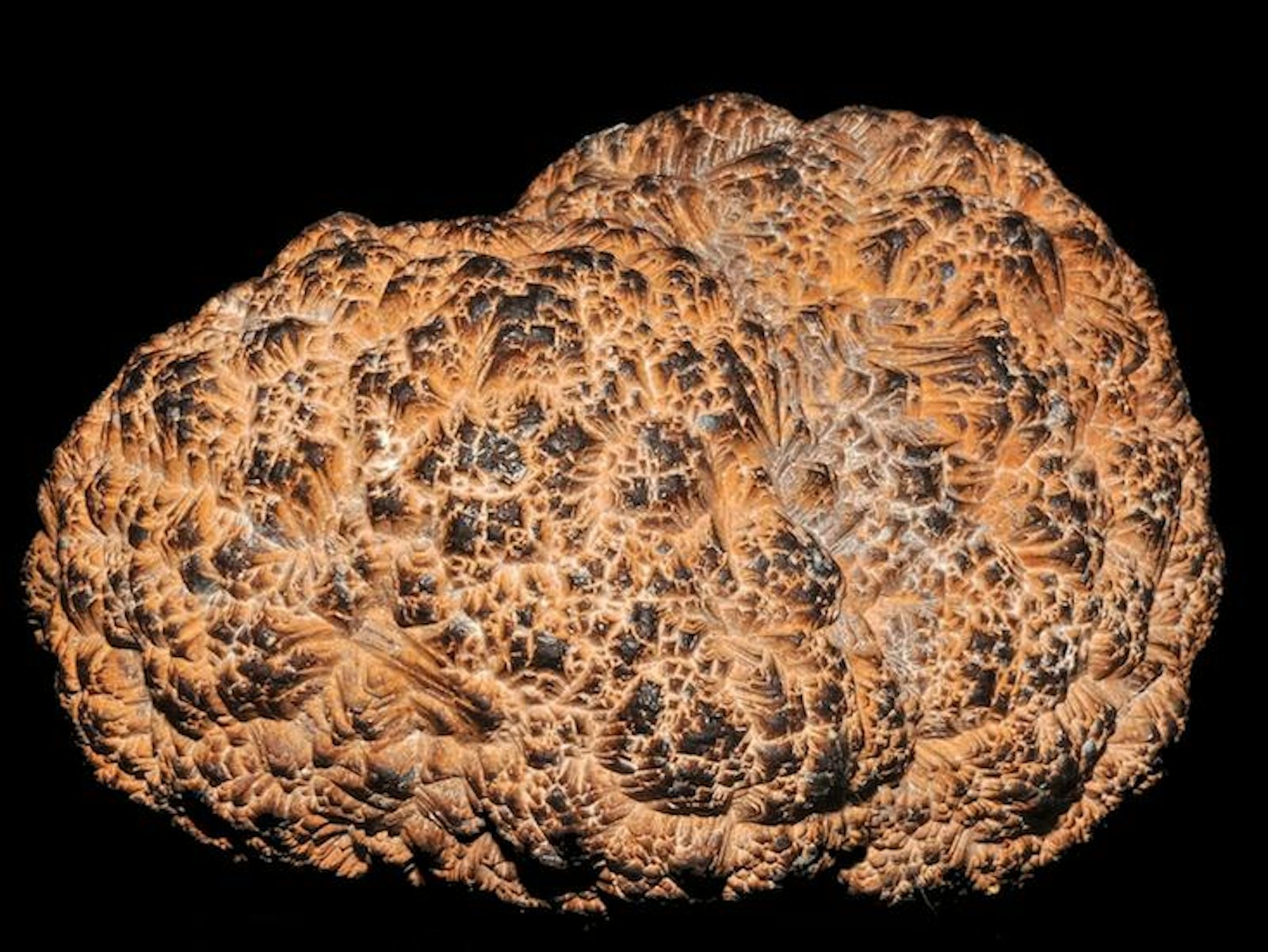Around 500 miles southeast of the bright turquoise waters at Honolulu Harbor, and two and a half miles down to the dark ocean floor, a massive carpet of potato-sized rocks stretches thousands of miles on the seabed. These rocks, called polymetallic, or manganese, nodules, are made up of manganese, nickel, copper, and cobalt. The nodules’ growth is one of the slowest geological processes in the world—it takes millions of years for one to grow a couple of millimeters: Tiny particles precipitate from the surface of the ocean to the seafloor and conglomerate around a core, like a rock or a shark tooth, and create a nodule.
John Mero, a professor of mineral technology at the University of California, Berkeley, was the first to eye them as a potentially revolutionary mineral resource. “Development of the means to mine manganese nodules could serve to remove one of the historic causes of war between nations, supplies of raw materials for expanding populations,” he wrote in his 1965 book, The Mineral Resources of the Sea. “Of course it might produce the opposite effect also, that of fomenting inane squabbles over who owns which areas of the ocean floor and who is to collect the protection money from the mining companies.”
Whether mining these nodules will help end cycles of war and peace still remains to be seen, but Mero was right about one thing: They are now the precious targets, worth millions of dollars, of an emerging deep-sea mining industry, and that’s making many researchers like Craig Smith, a professor of oceanography at the University of Hawaii at Mānoa, cautious. As the head of the Smith Lab, he focuses on the seafloor ecology of various habitats, including the abyssal plains, which cover 50 percent of Earth’s surface. “We assume that it is likely that more species occur in the deep sea than anywhere else on Earth,” the authors of one paper wrote.
“To pick up nodules, a mining machine, kind of like a potato harvester, would come along and dig up sediment. This would disrupt the top 10 to 15 centimeters of sediment, which is most of the habitat of the seafloor,” Smith tells me. “Nodule mining, because of its vastness and the slowness for the environment to recover, is basically an instantaneous wipeout of a community and ecosystem.”
When researchers from the University of Hawaii, like Smith, take box-core samples from the seabed, it’s the norm to discover new species, not the exception. The rare deep-sea communities based on and around the nodules respond, unsurprisingly, extremely slow to change. They hardly ever experience any disturbance: “Even after a very small-scale scientific dredge, we can still see the tracks on the mud 30 years later,” says Jeff Drazen, the chair of the Biological Oceanography Division at the University of Hawaii. “They look like they were made yesterday.”
The highest concentration of polymetallic nodules is in the Clarion-Clipperton Fracture Zone (CCZ), an area roughly 70 percent of the size of the continental United States, between Mexico and Hawaii. The zone has been divvied up into 15 national claim areas, seven environmentally protected areas, and one reserved area for the International Seabed Authority (ISA). Countries including Tonga, China, the United Kingdom, and Singapore all have claims. The metals these nodules contain are essential to modern technology. “The technology sector”—which includes the manufacturers of steel, fMRIs, smart phones, and LCD screens—“is completely dependent on these elements,” says Alex King, the director of the Critical Materials Institute, operated by the United States Department of Energy.
Above-water mines supply the global rare earth industry with over 100,000 tons of metals per year, according to a 2015 report by the U.S. Geological Survey. A 2013 paper, published in Ore Geology Reviews, states, “The mineral resources required to sustain growth and to support green- and emerging-technologies can no longer be supplied solely from land-based sources,” but they’re “abundant in deep-ocean crust and nodules.” Take thallium, for example, a metal used in optics, electronics, and magnet-based machines—the nodules in the CCZ contain 6,000 times more of the stuff than the “entire terrestrial reserve base for those metals.”
The necessary mining technology is too expensive relative to mineral prices for deep-sea mining to be profitable, though, so no one’s mined the nodules just yet. “Right now, it is nonexistent, a wannabe industry,” says John Wiltshire, the director of the Hawaii Underwater Research Lab, who has 40 years’ experience in the mining industry. Nevertheless, he says, it’s the “long-term future of mining.”
“Vast areas are being targeted by concession holders for future mining,” a recent Scientific Reports paper states. “Despite the present lack of knowledge, large-scale harmful effects of these activities are expected.”
To prepare for that, the ISA requires a biological baseline study be undertaken for each contract area. These studies will inform environmental-impact assessments on the effects of deep-sea mining. The ABYSSLINE project, for example, a program led by Smith, started baseline surveys for the United Kingdom Seabed Resources Ltd. exploration contract area in 2013, which should be completed by 2018.
But, given how little is known about the environment in the first place, it’s not clear how much help these assessments will be, says Diva Amon, a post-doctoral researcher at the University of Hawai’i’s Mānoa School of Ocean and Earth Science and Technology.
“There are a lot of effects of mining that we can’t even anticipate,” she says. “We’re just starting to answer the question of what actually lives down there and we’re still not even close to answering that.”
Sarah Fahmy is a Student Fellow at the Pulitzer Center on Crisis Reporting.
Watch: Syliva Earle, who heads the engineering firm Deep Ocean Exploration and Research, says how she appreciates the age and scope of the ocean.































